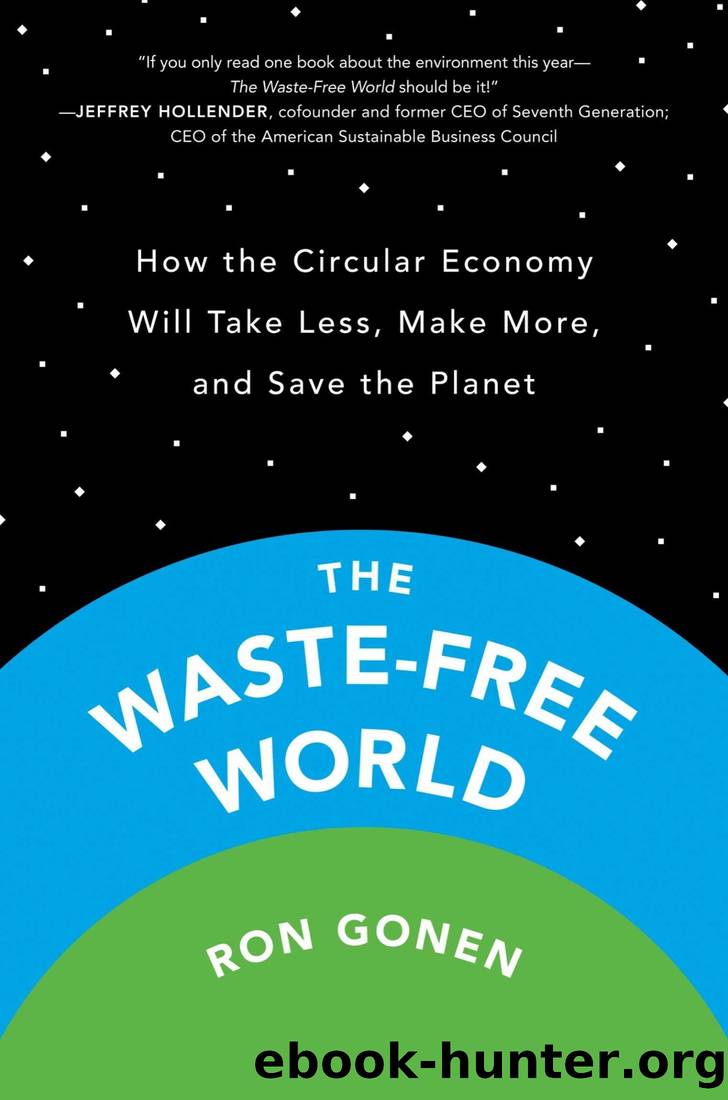The Waste-Free World: How the Circular Economy Will Take Less, Make More, and Save the Planet by Ron Gonen

Author:Ron Gonen
Language: eng
Format: mobi
Publisher: Penguin Publishing Group
Published: 2021-04-05T18:30:00+00:00
The First Miracle Fiber
DuPont proclaimed the wondrous new fabric was made simply of coal residuals, air, and water, but there was nothing simple, or natural, about its creation. Harvard chemistry professor Wallace H. Carothers was lured to the company to head up a team of 230 scientists who worked for eleven years on the project, discovering a means of artificially stringing together long chains of molecules, called polymers, that could be woven into fabric. DuPont also spared no expense in hyping nylonâs revolutionary qualities, putting stockings front and center at its 1939 Worldâs Fair exhibit. The fair featured many lavish futuristic displays, such as Westinghouseâs seven-foot-tall talking robot, Elektro, which boasted a seven-hundred-word vocabulary and professed to gawking crowds, âMy brain is bigger than yours.â But DuPontâs nylon exhibit nonetheless snared global media attention. The booth featured seamstresses cranking out nylons, which female models not only wore but played tug of war with to demonstrate the fabricâs strength. Nylons were âstrong as steel,â DuPont claimed.
While some press coverage doubted nylons would catch on, noting condescendingly that âitâs difficult to tell about female psychology,â women were thrilled. Advertised as âso durable that they resist runs and even cigarette burns,â a limited run of four thousand pair of nylons went on sale in 1939 in six select stores in Wilmington, Delaware, where DuPont is headquartered. Women lined up for blocks and the stock sold out within three hours. The original name of the fabric was nuron, which a manager of DuPontâs Nylon Division explained was âno runâ written backward. (A trademark for that name owned by another firm forced the change.) One woman reportedly asked a salesperson how many years a pair would last, and some accounts by women of the day attest to the stockingâs staying power. Grace Lyons later told a reporter, âThey were like iron. Theyâd last for a year.â So why do they run so readily now? Because at some point DuPont reportedly instructed its chemists to find a way to make them less run-resistant. Planned obsolescence strikes again!
Certainly, nylon can be made extraordinarily strong, which is why the U.S. military mandated that DuPont stop making stockings and repurpose all the fabric into producing parachutes and tents during World War II. The resultant stocking shortage led to so-called nylon riots when they went back on sale in 1945, with crowds of ten thousand and more women descending on shopping hubs all around the country. The worst incident occurred when a crowd of forty thousand stocking seekers in Pittsburgh competed for thirteen thousand pairs a small boutique had at last been able to procure. As author Susannah Handley writes in Nylon: The Story of a Fashion Revolution, âin all the history of textiles, no other product has enjoyed the immediate, overwhelming public acceptance of DuPont nylon.â
The environmental implications of clothing produced from fossil fuel didnât entirely escape notice, with one reporter chastising, again with sexist condescension, âIf youâre wearing those new nylon stockings, girls, youâre carrying around more coal dust than a miner.
Download
This site does not store any files on its server. We only index and link to content provided by other sites. Please contact the content providers to delete copyright contents if any and email us, we'll remove relevant links or contents immediately.
International Integration of the Brazilian Economy by Elias C. Grivoyannis(90953)
The Radium Girls by Kate Moore(11921)
Turbulence by E. J. Noyes(7936)
Nudge - Improving Decisions about Health, Wealth, and Happiness by Thaler Sunstein(7615)
The Black Swan by Nassim Nicholas Taleb(7010)
Rich Dad Poor Dad by Robert T. Kiyosaki(6401)
Pioneering Portfolio Management by David F. Swensen(6226)
Man-made Catastrophes and Risk Information Concealment by Dmitry Chernov & Didier Sornette(5921)
Zero to One by Peter Thiel(5685)
Secrecy World by Jake Bernstein(4644)
Millionaire: The Philanderer, Gambler, and Duelist Who Invented Modern Finance by Janet Gleeson(4374)
The Age of Surveillance Capitalism by Shoshana Zuboff(4209)
Skin in the Game by Nassim Nicholas Taleb(4162)
Bullshit Jobs by David Graeber(4094)
The Money Culture by Michael Lewis(4076)
Skin in the Game: Hidden Asymmetries in Daily Life by Nassim Nicholas Taleb(3929)
The Dhandho Investor by Mohnish Pabrai(3699)
The Wisdom of Finance by Mihir Desai(3653)
Blockchain Basics by Daniel Drescher(3507)
